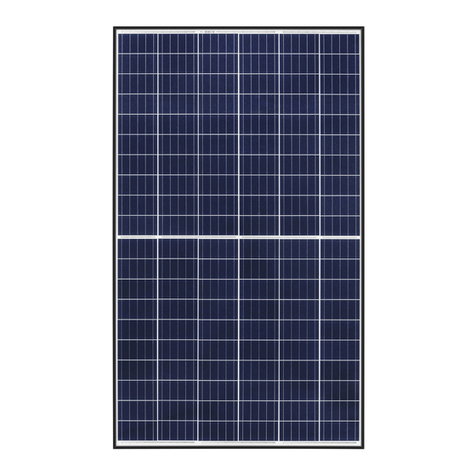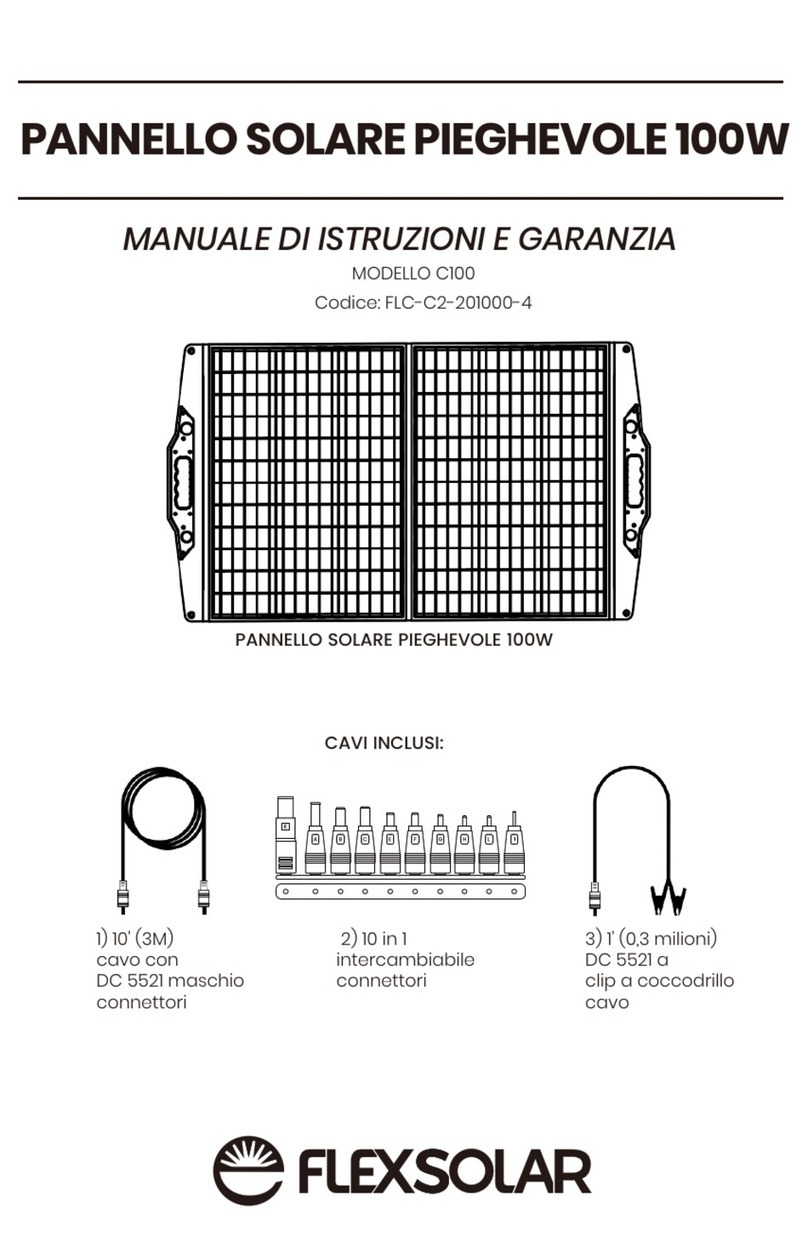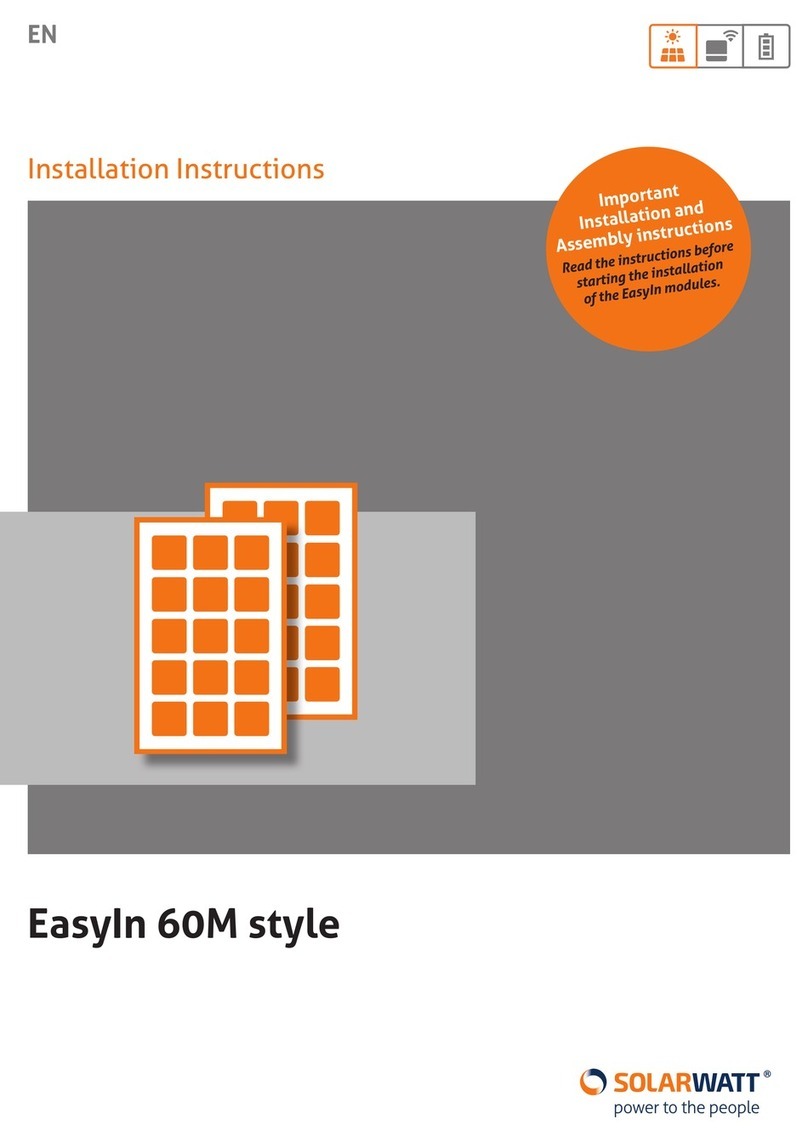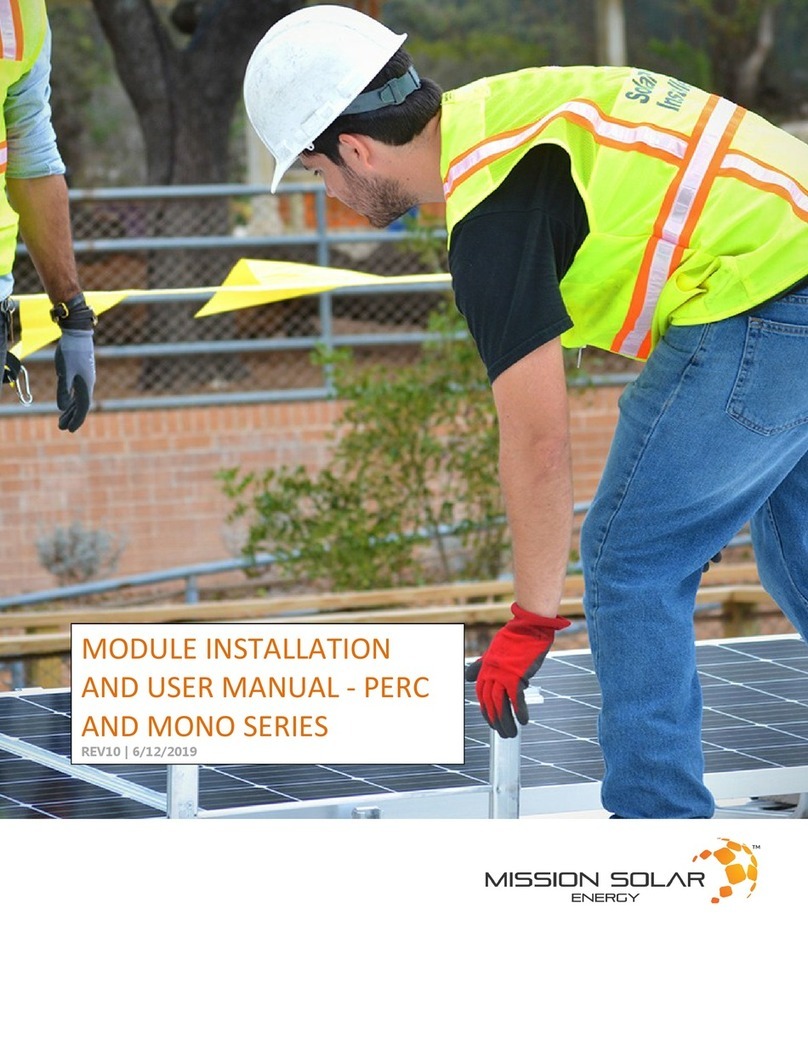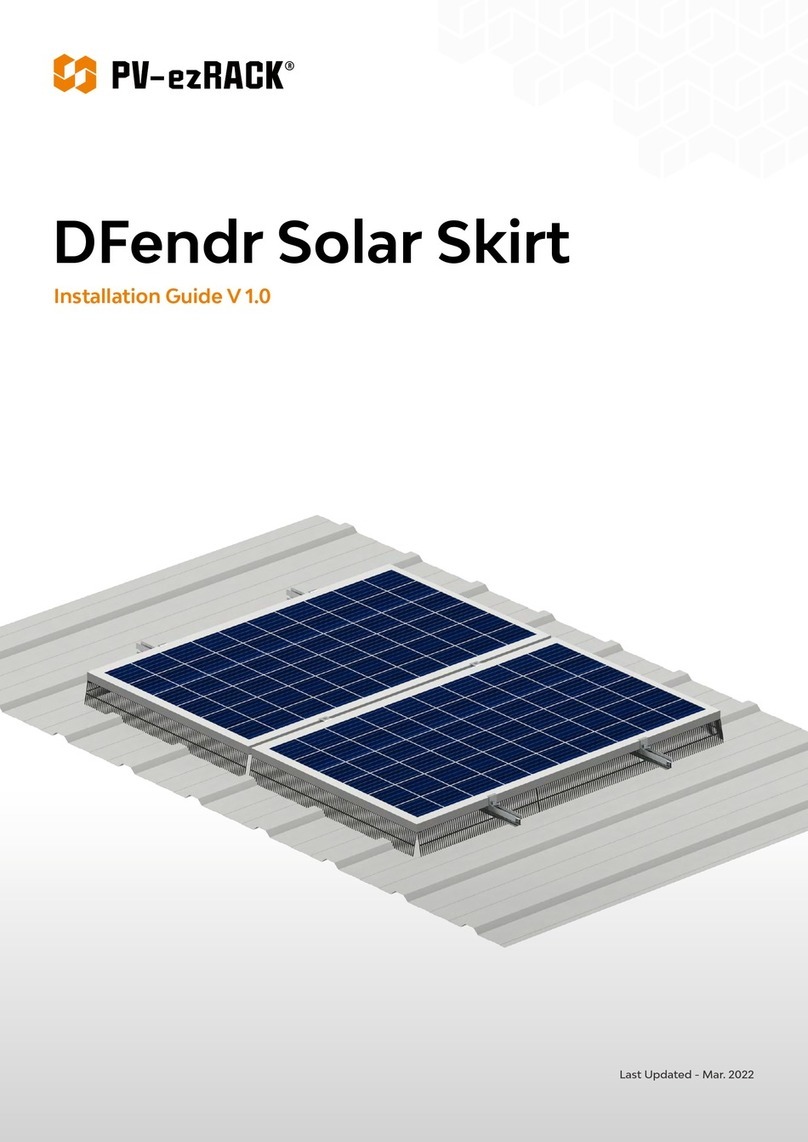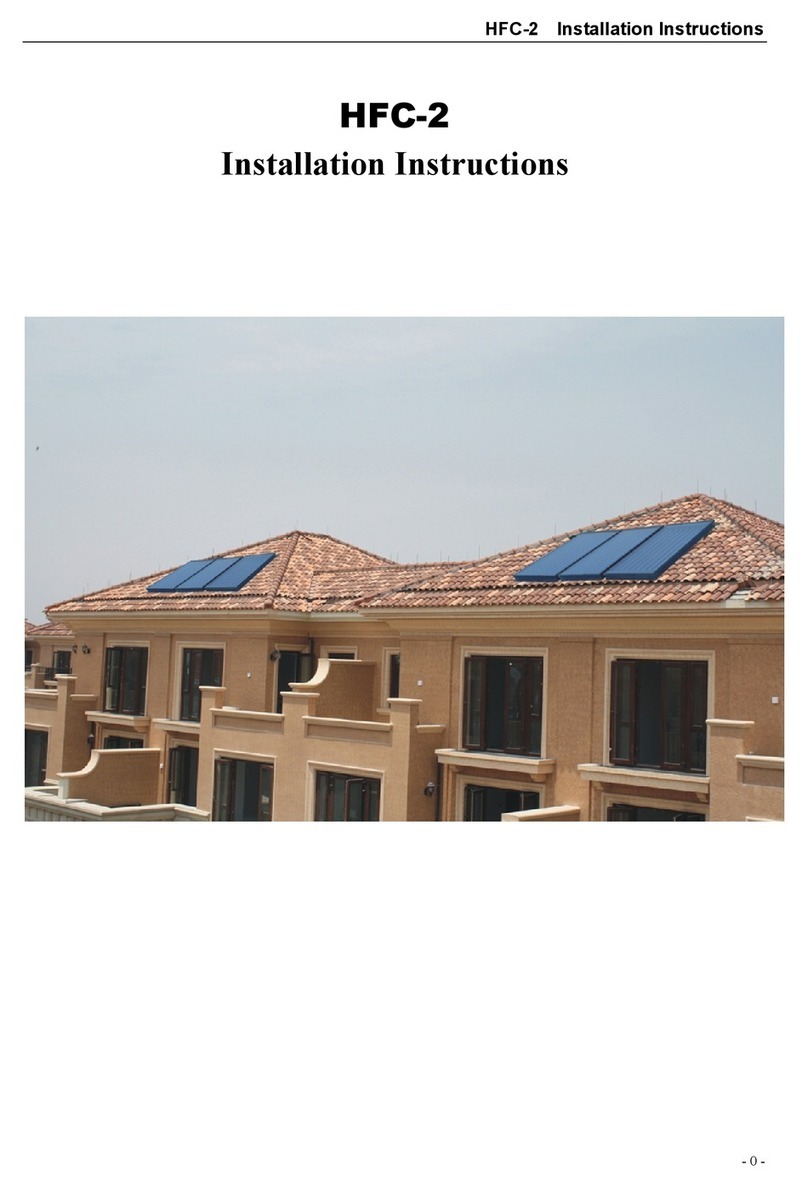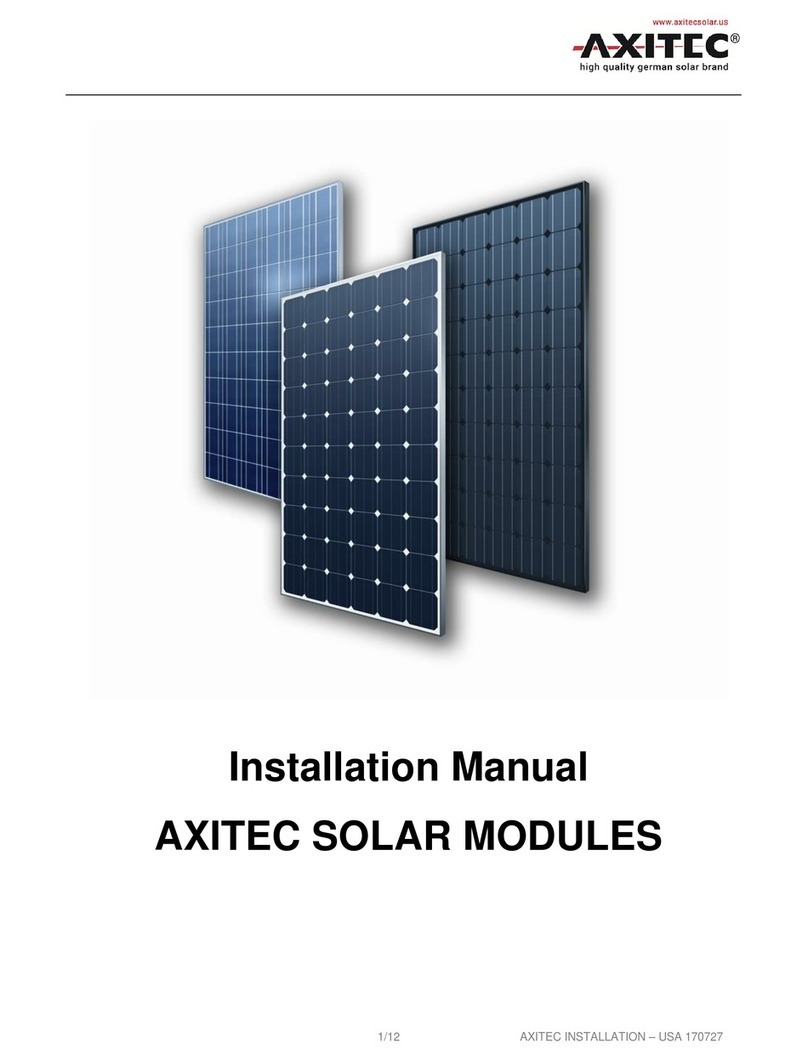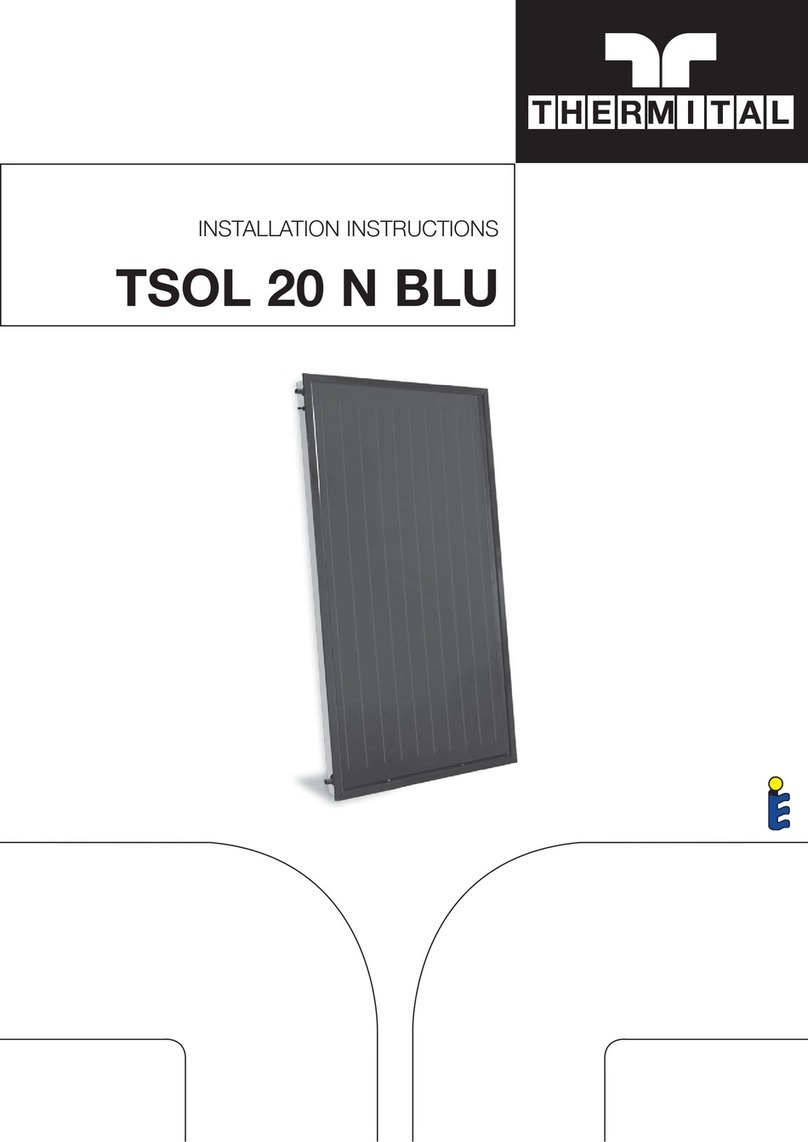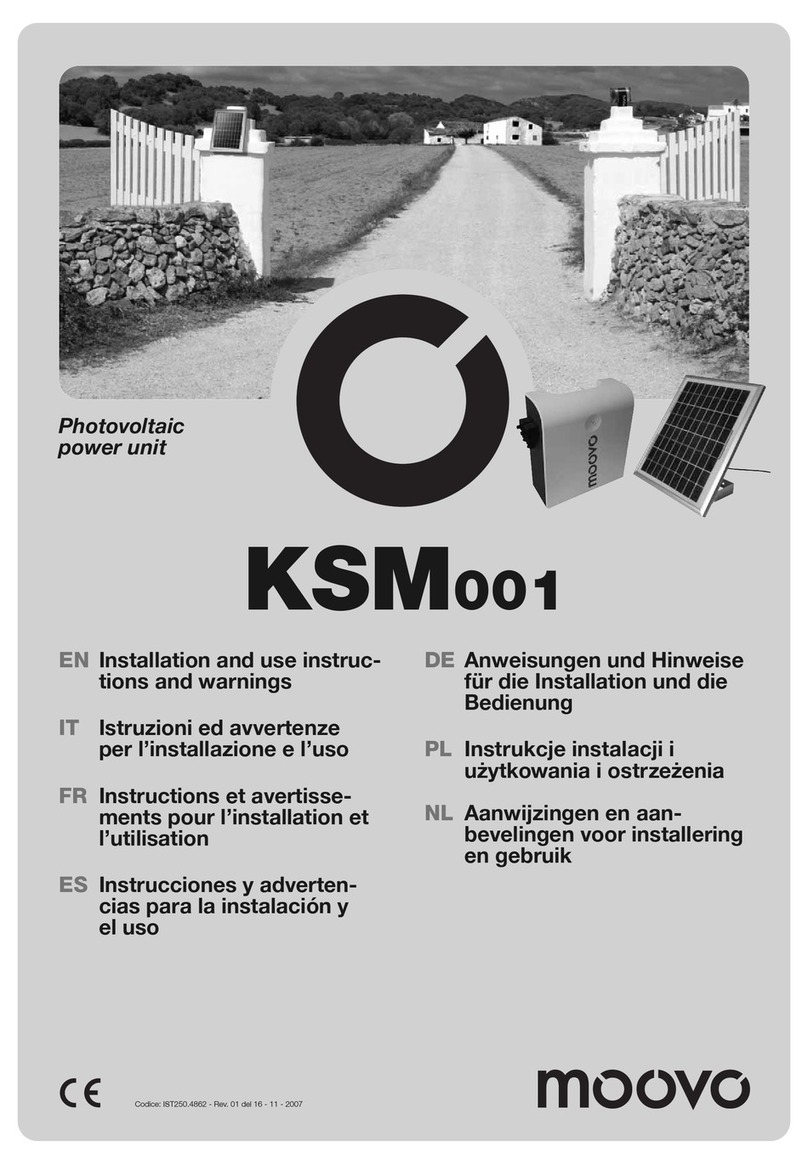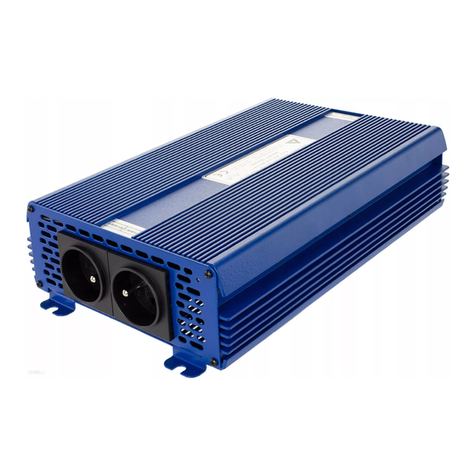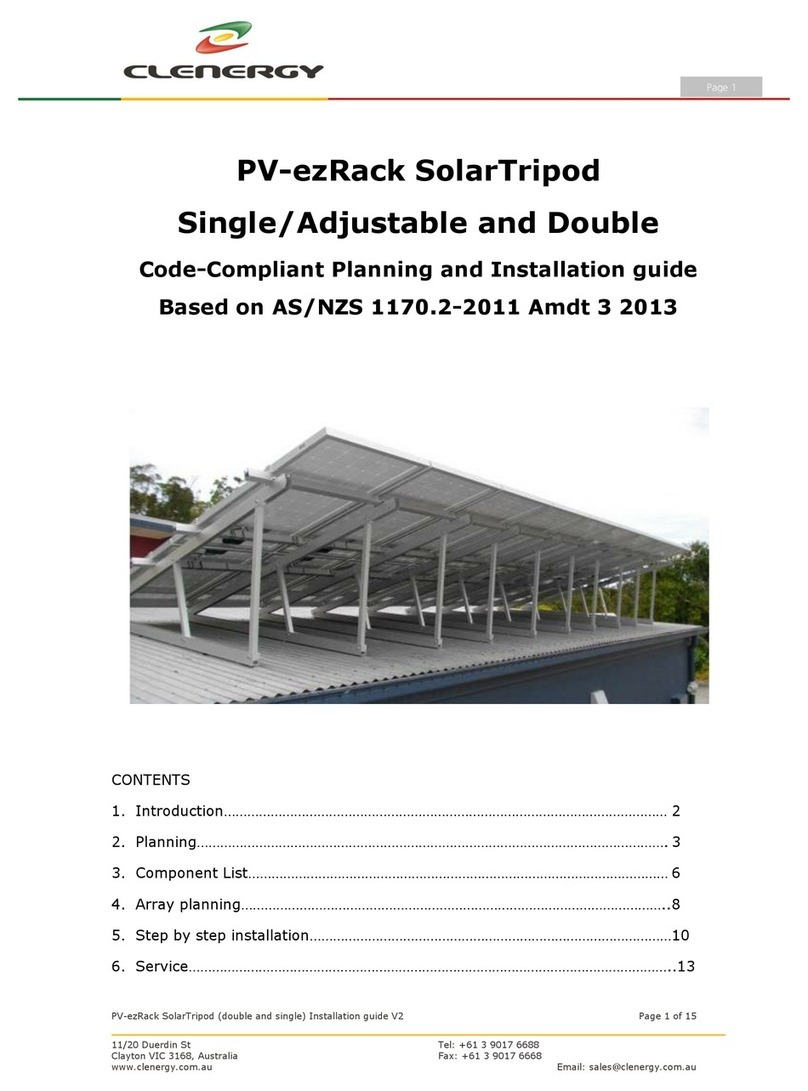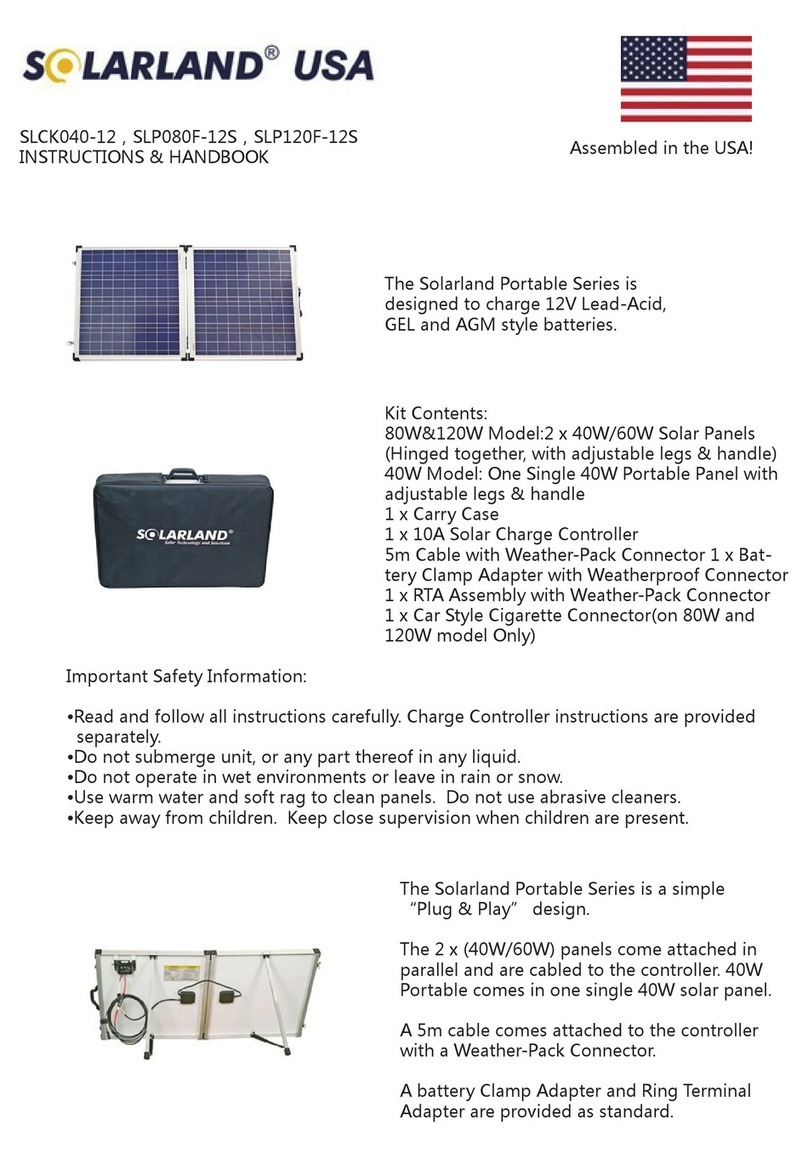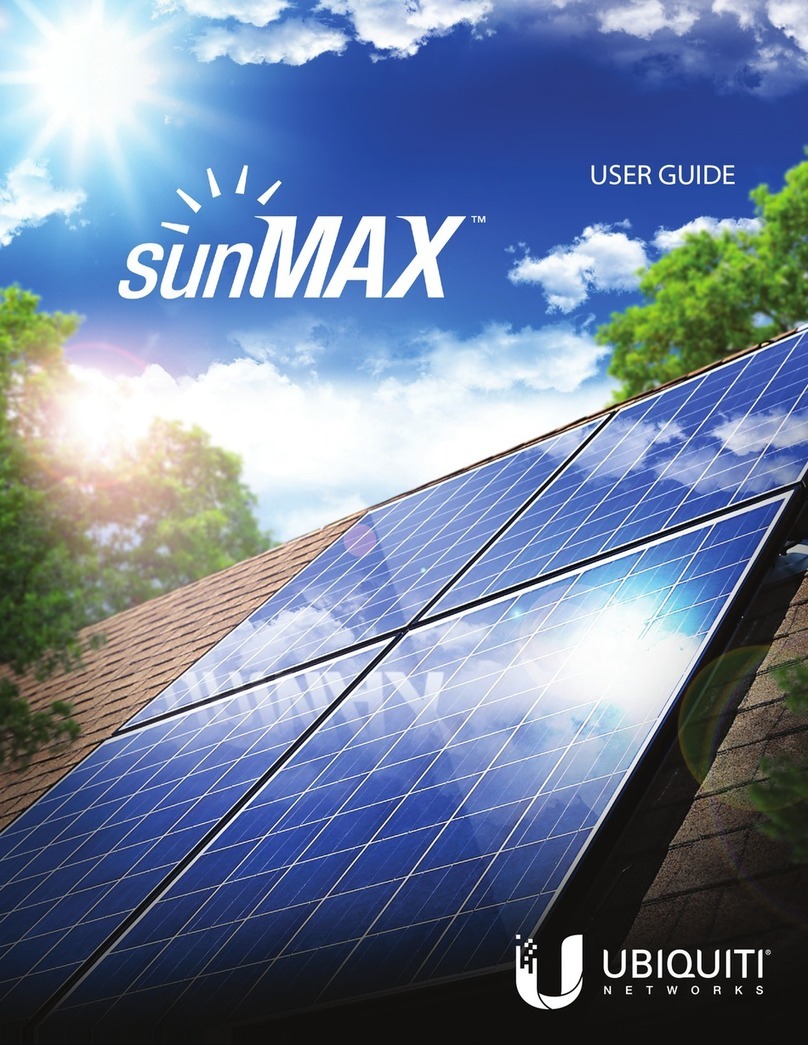
User’s Manual – AREBOS Solar Heating
8
4. Operation and Maintenance
1. The collectors should feel cool to the touch when the sun is shining on them and water is passing
through. This means that the heat is being transferred to the water.
2. The water returning to your pool will be a few degrees (3-5degrees) warmer than the pool itself.
This is the most efficient way to heat a large body of water like a pool. Keep circulating the water,
which adds a few degrees each pass.
3. Circulate water through the solar collectors at least 6 hours per day during the daylight hours on
sunny days. If you circulate water through it at night, when it's overcast or on chilly days, you will
cool your pool water rather than heat it. If you need to run your pump at night, divert the water
directly back to the pool and bypass the solar system. An automatic controller will sense the water
temperature and available radiation from the sun and automatically turn the 3-Way Valve to
direct the flow of water accordingly.
5. Winterization
Your solar system must be drained for winterization! You must drain your solar collectors just like you
drain the rest of your pool equipment.
Remove the vacuum relief valve at the top of the solar system. Remove the rubber end cap at the
bottom and be sure all the water is drained out of the system. Replace end caps and blow compressed
air in the reverse direction of normal water flow. This is the most effective way to drain your system.
Storing the solar collectors inside a warm and dry place is highly recommended.
6. Troubleshooting
6.1 What if a collector develops a leak?
Your solar collectors are warranted against defects in materials and workmanship. If a leak develops
for any other reason, you may use the repair method shown. The collectors are not warranted against
freeze damage.
Another reason can be a not proper working circulation system. Check the baffled and non-baffled
spots being placed in the right spot.
6.2 Solar collector repair
This method allows for an easy and permanent, on-site repair of a collector by isolating the leaking
tube. Referring to the figure at the next page, locate the tube to be isolated. (End tube has been shown
for clarity). Using a sharp utility knife, very carefully cut away approximately 1" of the tube at both
headers. Drive a 3/16’’ sheet metal screw, preferably stainless, into the hole in the header. The screw
must be between 1/2" and 3/4" long. Do not overtighten the screw. If the screw strips out, or if the
repair leaks, use a bigger screw. You can also wrap nylon tape around the screw for sealing.
With proper care and winterization, you will enjoy your solar collectors for many years.
